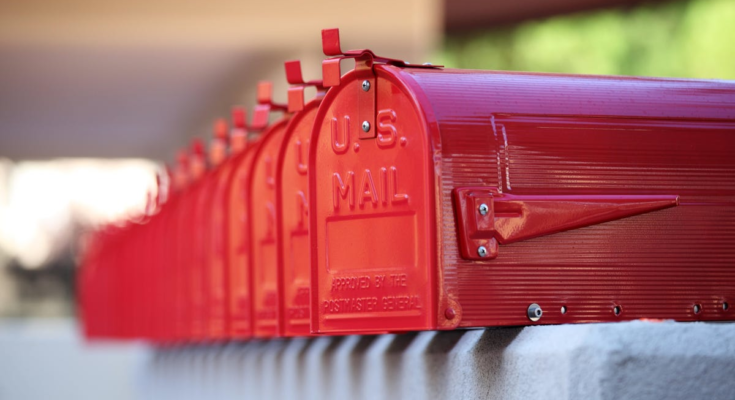
When you mail something via the United States Postal Service (USPS), it can be hard to know when it might reach its final destination. And if it seems like it’s been taking longer than usual for a letter to get from one part of the country to another, it’s not your imagination: It’s part of a USPS money-saving strategy.
While there are no guaranteed delivery timeframes for regular first-class mail, an interactive map from the USPS makes it possible to find out how long it is expected to take for a letter to arrive at its destination. Here’s what to know.
Why USPS mail delivery has gotten slower
Starting on October 1, 2021, in an attempt to save money, the USPS began relying more on their own fleet of ground transportation vehicles and less on air transport to deliver letters, NPR reports. And beginning May 1, 2022, the USPS started taking the same (i.e. slower) approach to first-class packages, which are, for the most part, small and lightweight.
So, yes, the mail has gotten slower, and yes, that’s annoying. And though complaining about it isn’t going to speed it up, we can use tools from the USPS to adapt to its new pace.
How to use the USPS Service Standards map
We first found out about the USPS Service Standards map from the Recomendo newsletter; more specifically, a tip from Claudia Dawson.
G/O Media may get a commission

46% off
Toshiba 75-Inch 4K Smart TV
Save $650
Aside from being massive and having 4K and UHD, it also comes Alexa built-in to allow for easier control, has low latency if you’re a gamer (and even if you’re not), and has a 480 Motion Rate Panel for smooth as butter movement too.
“I needed to figure out how long it would take a stamped letter to reach the other side of the country and an initial google search buried this very helpful, color-coded ‘delivery days’ map of the US,” she wrote. “You can filter by originating zip code or the destination, as well as class of mail.”
While the map is updated quarterly—most recently on April 1, with the next coming on October 1—and does account for changes in the processing, transportation, and delivery network, it does not provide realtime information on delays caused by bad weather, or items getting lost in transit. (Contrary to popular belief, “Neither snow nor rain nor heat nor gloom of night stays these couriers from the swift completion of their appointed rounds” is not, nor ever has been the motto of the USPS.)



